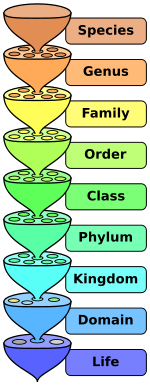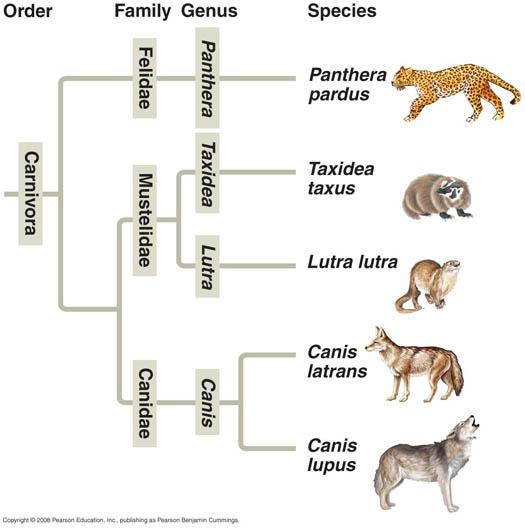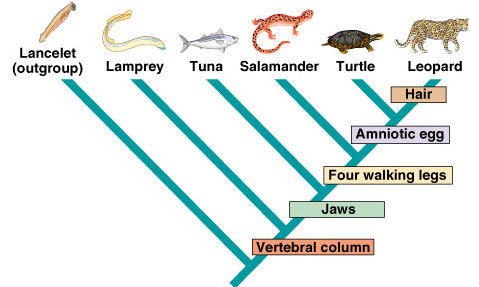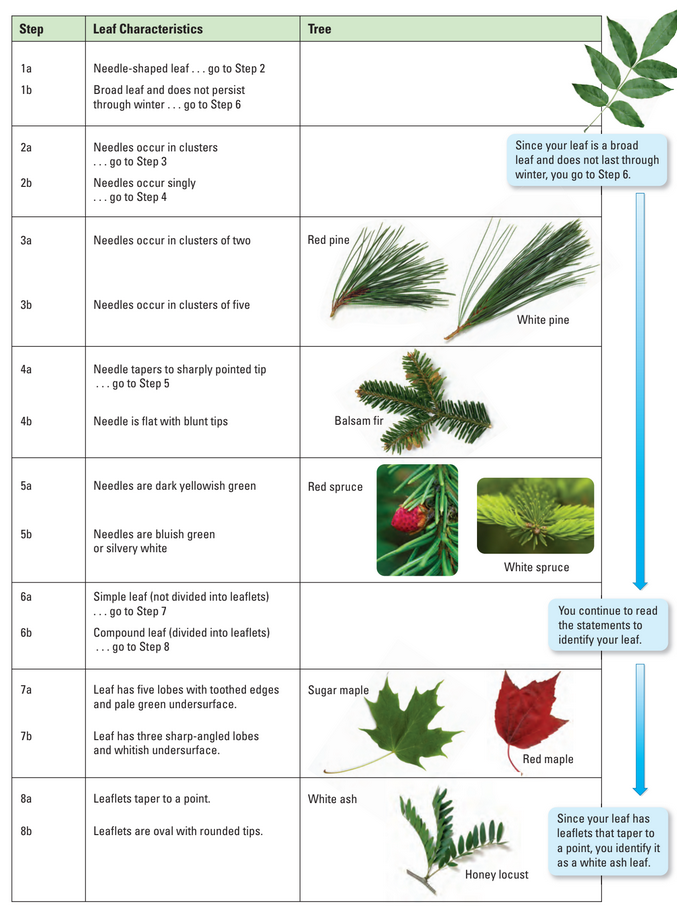C2.1 - The Diversity of Life
Organizing Life: Criteria
- Morphology
- Habitat/niche
- Locomotion
- Colour
- Evolutionary history
- Food source
Statistics
- 1.5 mil. species of animals named
- 1000s more animals being named each yr.
- All species named so far believed to be <20% of all living animals
- <1% of animals, incl. those that lived in the past
- ~7.5 mil. animal species on Earth
- Best guess; do not include bacteria, protists, fungi and plants
Examples of Species Richness
| Region | Area (sq. km) | Bird Species | Tree Species |
|---|---|---|---|
| Panama | 15 | 443 | 1,320 |
| Costa Rica | 15 | 410 | 1,668 |
| Ecuador | 15 | 480 | |
| Peru | 50 | 554 | 1,370 |
- 1980s: Entolomologist Terry Erwin sampled 19 tropical trees
- Collected 955 species of beetle
- Extrapolated that there was ~30 mil. animal species in world
- entolomologist: person who studies insects
- mammologist: person who studies mammals
Biodiversity
- biosphere: zone on Earth where all life exists
- gene: units of inherited information that determine specific characteristics or functions
- biodiversity: variety of life in the world
- product of mil. of yrs. of evolution
- symbiotic relationship: two organisms work together and help each other
Honeybees
- Honeybees
- North America used to have 4,000 diff. native pollinators
- settlers brought honeybees around 1800s
- honeybees outcompeted native pollinators
- if honeybees die, who is going to pollinate the plants?
- Mysterious Disappearance of Honeybees
- pesticides?
- Varroa mite (sucks on bee’s blood until bees become weak and die)
- contains viruses like Israeli acute paralysis virus (IAPV)
- IAPV immobilizes bees and ultimately kills them
Levels of Biodiversity
- genetic diversity: sum of all different forms of genes present in a particular species
- allows for population resistance against disease / predators
- farmers often grow genetically similar crops of wheat to max. food production
- same equip., fertilizers, techniques
- vulnerable to diseases and pathogens
- species diversity: variety of species and relative abundance of species in given area
- allows ecosys. to survive environ. changes
- ecosystem diversity: diverse range of habitats, various organisms that live in habitats, and relationships that connect them
Different Views of Environment and Ecosystems
- instrumental value: ecosystem’s sources of economic wealth
- i.e. food, timber, fuel, medicine
- Sources of inderect economic wealth
- i.e. pollination, genetic info., recreation
- Cultural value for Aboriginal groups
- intrinstic value: value that cannot be measured in monetary terms
- Ecosystems and their components have a value that cannot be measured in dollars and cents
- Plants and animals have a value purely in themselves
“A thing is right when it tends to protect the health and integrity of ecosystems…. It is wrong when it tends otherwise.” — Aldo Leopold, 1949
Value of Biodiversity
- Insects, bats, birds, and other animals pollinate flowering plants and crops.
- Micro-organisms make nutrients available and break down toxic substances in water and soil.
- Ecosystems cycle carbon, nitrogen, and oxygen.
- Ecosystems clean air, purify water, control erosion, prevent floods, and modify climate.
keystone species: species that have disproportionately large effect on ecosystems in which they live
Taxonomy

- taxonomy: science of naming and classifying organisms
- Cf. systematics: science of determining evolutionary relationships among organisms
- Nested hierarchial system w/ defined levels of organization
- taxon: defined level in organization of life
- pl. taxa
- 8 recognized taxa
- In order from broadest to most specific:
- Domain, Kingdom, Phylum, Class, Order, Family, Genus, Species
- 3 Domains: Bacteria, Archaea, Eukarya
- 6 Kingdoms: Eubacteria, Archaebacteria, Protista (protists), Plantae (plants), Fungi, Animalia (animals)
Classification Example
| Leopard | Modern Humans | |
|---|---|---|
| Domain | Eukarya (eukaryotes) | Eukarya (eukaryotes) |
| Kingdom | Animalia (animals) | Animalia (animals) |
| Phylum | Chordata (chordates) | Chordata (chordates) |
| Class | Mammalia (mammals) | Mammalia (mammals) |
| Order | Carnivora (carnivores) | Primates (primates) |
| Family | Felidae (felines) | Hominidae (hominids) |
| Genus | Panthera (panthers) | Homo (mankind) |
| Species | P. pardus (leopard) | H. sapiens (wise) |
Binomial Nomenclature
- binomial nomenclature: Latin 2-part unique naming sys. used to classify species
- binomial: two-part Latin name
- also known as a species’ scientific name
- Developed by Carolus Linneaus in the 1750s
- Order of naming: Genus species
- Species: members of a populaton that can interbreed and produce viable offspring
- i.e. Canis familiaris (the family dog)
- Linnaeus grouped species according to their morphology
- morphology: study of form and structure of organisms
Importance
- malaria (deadly disease) spread through mosquito bites
- insecticide to mass kill mosquitos failed to control disease
- classification and targeting of specific mosquitos controlled disease
- Anopheles maculipennis (mosquito) carries malaria
Phylogeny (from Evolution in Textbook)
- phylogeny: evolutionary history of a species or group of organisms
- Organisms can be arranged by evolutionary relationship on a phylogenetic tree or a cladogram
- phylogenetic tree: diagram that reflects the hypotheses of evolutionary relationships
- node: point where tree splits; repr. common ancestor
Cladistics
- cladistics: determine sequence of branches in phylogenic tree via clades
- derived characters: homologous structures in a clade
- cladogram: diagram that specified derived characters of clades
- A clade on a cladogram represents one branch on a phylogenic tree
- clade: group of a common ancestor and all descendants
- All organisms in a clade must have homologous structures that do not occur outside the clade
Phylogeny and HIV Evolution
- Case in Libya (1998)
- Police arrest group of doctors and nurses
- charge w/ bioterrorism bcz. they believe ppl. intentionally infected children w/ HIV
- Scenario 1: Medics Could’ve Infected Children
- new strains would’ve developed from single strain after 1998
- Scenario 2: Infections Began Before Medics Arrive
- lineages of HIV split before medics arrive
- ✅ 2nd scenario correct
- causes: dirty needles and poor hygiene practices
- Libyan court convicted 6 medics to death
- eventually transferred back to Bulgaria
- recieved presidential pardons and set free
Phylogenetic Tree

Cladogram

Dichotomous Keys
- dichotomous key: tool used to identify unfamiliar organisms
- dichotomous greek for “to cut in two”
- Used to identify organisms down to the species level
- Like a roadmap to a specific destination
- More accurate than a field guide

Human Impact on Biodiversity
- dead zones: areas w/ low levels of oxygen in water that cannot support life
- dredging (removal) and development for farming, roads, and housing reduces biodiversity
- fertilizer runoff creates dead zones in water
- ecosystems like Great Lakes can recover with proper care
- agreements like the Great Lakes Water Quality Agreement have helped reduce damage
- extinct: when there are no alive individuals of a species left
- mass extinction period taking place (evidence below)
- 12% of 9,900 known bird species endangered
- 300 / 20,000 plant species in risk (N.A.)
- 37% of known fish have become extinct / at risk
Threats to Biodiversity
- habitat loss: loss of habitat (place to live)
- habitat fragmentation: alteration of small areas within large region; creating patchwork of altered and original habitats
- i.e. roads split habitat into two
- Forest Stewardship Council work to conserve and protect forest habitats
- habitat fragmentation: alteration of small areas within large region; creating patchwork of altered and original habitats
- invasive species: non-native species that harm ecosystems where they are introduced
- i.e. kudzu (Jap. plant) in N.A. (brought to control erosion)
- emerald ash borer (arrived in wood packing material)
- Asian carp
- zebra mussels (emptying of ship ballasts)
- pollution: introducing contaminants that harm ecosystems
- i.e. coal power, pesticides
- overexploitation: using resources faster than they can reproduce
- i.e. cod fishing (479,141 tons → 12,490 tons catched from 1988 - 95)
- climate change: long-term changes of weather patterns
- Potential Effects
- disease outbreaks (i.e. from insects)
- plant migration
- animal migration
- extreme weather
- increased CO2 levels (changes pH of water)
- water availability and qty.
- Potential Effects
- synergistic effects: combination of several harmful human activities
Conserving Biodiversity
- conservation biology: application of biology to counter loss in biodiversity
- The Convention on Biological Diversity signed by 161 countries incl. Canada
- ex-situ conservation: protecting species by removing them from their natural habitats
- i.e. storage of seeds
- zoos
- botanical gardens and reserves
- last resort
- in-situ conservation: protecting species in their natural habitats
- i.e. establishing protected areas
- restoring habitats
- ecological footprint: estimate of all the land and water needed to produce the resources you consume and to absorb the wastes you produce
- avg. Canadian uses 8.9 ha
- 17 football fields
- would need 5.7 Earths if everyone lived like that